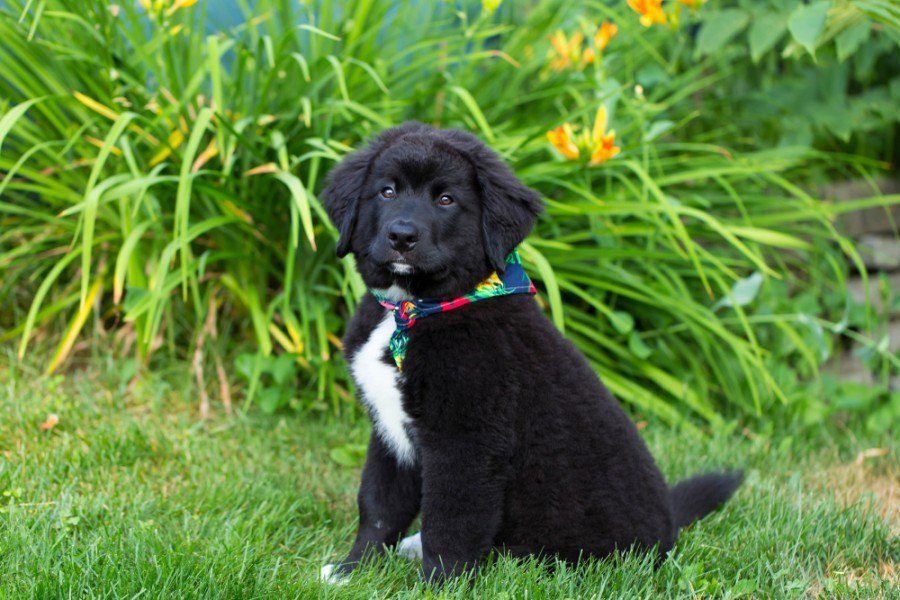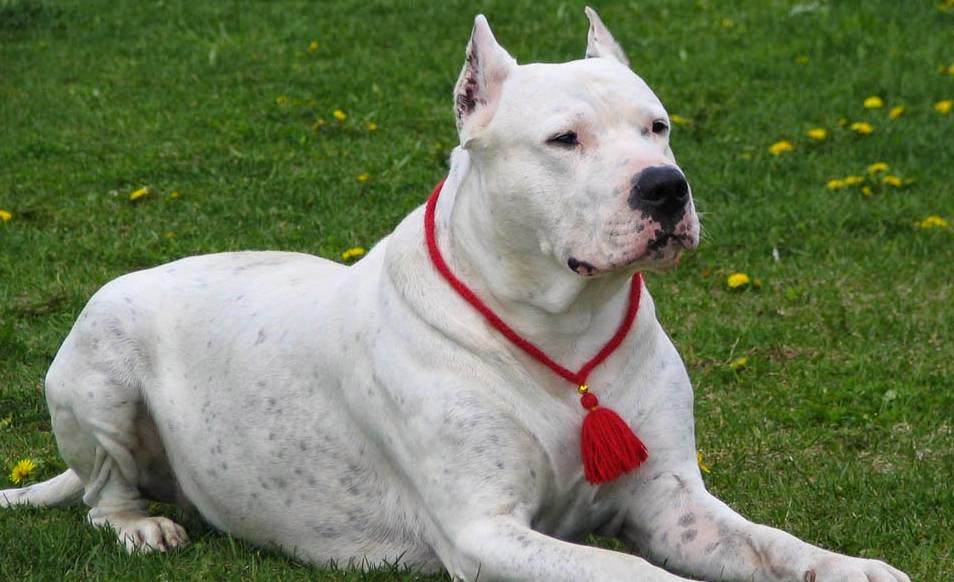We all know that Labradoodles are a mix of Poodles and Labrador Retrievers. However, when it comes to Australian Labradoodles, there is a lot more that we need to be cognizant of.
One of those interesting facts is that despite being hybrid dogs, Australian Labradoodles have been bred to create a new purebred dog with its own standard physical and characteristic features.
But wait! This is not enough. There are many more facts that you must know about these dogs to differentiate them from regular Labradoodles.
Besides that, these dogs tend to have some distinctive features of their own. Who knows? They may prove to be just the dog for you.
Let us find out from this detailed guide on Australian Labradoodle.
Introducing the Australian Labradoodle
With the genes of the two most preferred family dogs, Poodles and Labrador Retrievers, Labradoodles’ popularity is soaring day by day. In fact, they appear to be almost everywhere.
However, when it comes to the Australian Labradoodle, it seems people have some severe misapprehensions regarding these dog breeds.
As the name suggests, it is a cross between Poodles and Labrador. But unlike regular Labradoodles, these dogs tend to have the genes of some other dogs as well.
These include the genes of Curly Coated Retrievers, Irish Water Spaniels and English and American Cocker Spaniels. Quite a variety, no?
Nonetheless, as mentioned earlier, Australian Labradoodle breeders aim to produce a new and distinct purebred dog.
The resultant features are supposed to be more predictable than the early-generation Poodle-Labrador cross.
That is why so many dog breeds have been crossed with each other to produce this designer dog.
When and how did the first Australian Labradoodle come into being?
Even though the term “Labradoodle” was first used in 1955, the dog breed didn’t get that much popularity until several decades passed.
As far as the Australian Labradoodle is concerned, it was in the 1980s that they were first produced.
Just like all other scientific inventions and discoveries, these dogs were created out of necessity, the necessity of a couple.
One of them being blind and therefore, in need of a guide dog. While the other being allergic to dogs.
Faced with this peculiar predicament, Wally Conran, the Australian Guide Dog Services’ breeding manager came up with this new dog called Labradoodle.
The dog has the guiding qualities of the Labrador Retriever and the famous “hypoallergenic” coat of Poodles.
No wonder these hybrid dogs became one of the most favourite family dogs, not only in Australia but also all over the world.
How Australian Labradoodles are different from regular Labradoodles?
As mentioned earlier, not all Labradoodles are Australian Labradoodles. In fact, the differences are so many that you can consider the Australian Labradoodle as an entirely separate breed.
To have a detailed insight into these differences, you have to study their genetic history.
What distinguishes the regular Labradoodle from the Australian Labradoodle is that the former tends to have a Poodle and a Labrador parent.
These Labradoodles are called F1 Labradoodles. The puppies they produce are called F2 Labradoodles, and the same process goes on.
It must be noted that these standard Labradoodles are crossbred with either of these dogs.
- Poodles
- Labrador Retrievers
- Labradoodles
The Australian Labradoodle, on the other hand, is produced by intermixing the genes of the following dog breeds apart from the Poodles and Labrador Retrievers.
- Curly Coated Retrievers
- American Cocker Spaniels
- Irish Water Spaniels
- English Cocker Spaniels
Why do Australian Labradoodles comprise of the genes of so many breeds?
The Australian Labradoodles’ breeders aim to create a pooch with a conquering personality. Accordingly, they have taken the best features of the six dog breeds mentioned above.
The intermixing of so many dog breeds is supposed to create an entirely new dog with some regular and unique features in the later generation of these dog breeds.
Interestingly, the breeders have been quite successful in achieving their goal. The Australian Labradoodle does have some unique physical and personality traits that make it stand out in the crowd of Labradoodles.
General Appearance of the Australian Labradoodle
Generally, the Australian Labradoodles come in three sizes because of the variation in their genes- medium, standard and miniature. Consequently, the variation range seems to be too vast when it comes to their weight and height.
In terms of stature, the Australian Labradoodle will be somewhere between 14 and 24 inches. If it exceeds the 25 inches mark, be sure that there’s something wrong with the dog you intend to purchase.
The Australian Labradoodle’s weight varies between 15 to 65 pounds. It has two large circular eyes and one fleshy square-shaped nose. The body is not that sturdy, but it is not skinny as well. It has a reasonably broad face held by a strikingly long neck.
For further information on the breed’s standard appearance, you can refer to the Australian Labradoodle Association of America (ALAA)’s official webpage.
The Australian Labradoodle’s Coat Colour
With a single coat, the Australian Labradoodle tends to shed significantly less and correspondingly, considered a hypoallergenic dog.
You will find two types of fur textures- fleecy and woolly. They can have curly, wavy or straight hair.
Whatever be their fur texture, ascertain that the length of a hair strand must not exceed 4 inches. Besides that, the overall coat must not be too thick or dense.
As far as the coat colour is concerned, you will definitely not be in short of choices. The vast range of colours may include the following:
- Caramel
- Apricot
- Caramel Ice
- Caramel Red
- Gold
- Red
- Chalk
- Cream
- Lavender
- Caramel Cream
- Parchment
- Cafe
- Blue
- Black
- Chocolate
- Silver
- Tricolour
Among these, the chocolate colour is the most preferred among the Australian Labradoodle lovers. Besides the colours, you will also find some markings in your pup’s coat.
You can check the AALA official web page to see more details regarding the coat markings and their conformity to the breed standard.
Overall Personality of the Australian Labradoodle
Intelligent, loyal, sociable and energetic-these are the words you will like to use to describe your Australian Labradoodle. It is because of these very qualities that Australian Labradoodles are used as guide dogs and therapy dogs.
However, if you are need of a guard dog, we will suggest you to not go for this one.
Australian Labradoodles tend to be so social that they can wag their tail in glee and show their affection even to strangers—obviously, not a very desirable quality when you are supposed to protect your home from intruders.
Besides that, their intelligence and energy seem to have no match. However, unlike regular Labradoodles, Australian Labradoodles tend to be calmer at home. They won’t behave too hyperactive around the children.
However, avoid leaving your dog alone for long hours as that will lead your pup to acquire mental issues like anxieties and fear.
The Australian Labradoodle’s Grooming Requirements
Even though your Australian Labradoodle may not shed, that does not makes it a low maintenance dog. On the contrary, it can turn out to be a very high maintenance dog as it develops matted and tangled hair.
You have to brush and comb its coat at least two to three days a week so that its fur remains mat and tangle-free. Taking the help of a professional groomer is highly recommended for a good haircut at least three to four times a year. Ascertain that the fur is so cut that the hair doesn’t block its eyes, nose, ears and private parts. You must trim its nails every day.
Besides that, you have to clear its ears by massaging them and using some ear cleaning solutions. The tasks may seem quite daunting at first, but a little help and demonstration from professional groomers or vets will surely lessen your apprehensions.
The Australian Labradoodle’s Nutrition Requirements
Your dog’s nutrition needs will primarily depend on its size and age. If you have a small-sized Australian Labradoodle, 2 cups of meals per day will suffice.
However, if your pup is a large one and is highly energetic, you must give it 3 cups of meals per day.
Avoid skimping and ascertain that your dog takes high-quality food with all the required nutrients.
Because your dog carries Labrador genes, it is likely to starve all the time. Try to monitor its food and treat intake. Otherwise, your Australian Labradoodle may become overweight and develop related health problems.
The Australian Labradoodle’s Training Requirements
Having inherited the genes of some highly intelligent predecessors, your Australian Labradoodle is bound to be extremely smart. Consequently, you won’t face much problem training your dog.
Besides that, Australian Labradoodles tend to be keen to please. Therefore, a small amount of verbal and food treats have the potential to generate far-reaching results. However, as mentioned earlier, monitor your pup’s food intake as it will have an insatiable appetite.
Use positive reinforcement method for its obedience training as punishments will yield no positive results, and your dog may become anxious. Even though your Australian Labradoodle is naturally social, exposing it to a variety of situations, places, humans and animals will build its confidence and prevent mental problems like stress and fear.
The Australian Labradoodle’s Exercise Requirements
With the genes of some extremely active predecessors, your Australian Labradoodle will need a lot of exercises. These exercises will primarily entail running, jumping, diving, swimming and other sporting activities. The duration of exercises will depend on your dog’s size, namely medium, miniature or standard.
However, if you insist on a general duration, we will advise you to exercise your dog for 30 minutes to one hour. Always remember one thing, “A tired (not weak) Australian Labradoodle is an obedient Labradoodle.”
The Australian Labradoodle’s General Health and Lifespan
Whatever may be the popular belief, science says that hybrid dogs tend to be healthier than their purebred parents.
Years of inbreeding has made the purebred dogs more susceptible to a vast range of infirmities. However, that doesn’t imply that your Australian Labradoodle won’t have any health problems. Even though it has a healthy lifespan of 13 to 15 years, there are some definite chances for it to inherit some of its purebred parents’ health problems.
A reliable breeder will present you with your dog’s genetic history and medical records. Try to peruse those medical records and ascertain that your pup’s pedigree doesn’t have any of the following health problems.
Eye Problems
Among eye-related issues, your Australian Labradoodle is most likely to develop Progressive Retinal Atrophy (PRA). It is a genetic disease that can cause your dog to lose its vision and eventually become blind.
Besides that, Multifocal Retinal Dysplasia is an eye disease to which Australian Labradoodles are particularly susceptible. Due to this eye issue, your pup’s retina is likely to get detached, eventually leading to blindness.
Therefore, we will advise you to do some precautionary eye tests like Ophthalmologist evaluation before you venture to adopt your dog.
Hip and Elbow Dysplasia
Having the genes of some highly active gun dogs, your pup is very much likely to suffer from conditions like elbow and hip dysplasia. These issues give rise to diseases like lameness and severe arthritis.
Your dog may also suffer from patellar luxation. To avoid all these hip, elbow and other joint problems, we will advise you to check your pup’s joints and bones health before venturing to take them home.
Von Willebrand’s Disease
It is a kind of bleeding disorder. Your Australian Labradoodle is specifically susceptible to it. Therefore, you must get a Von Willebrand’s disease test to secure a healthy and long lifespan for your dog.
Exercise Induced Collapse
Because your dog has Labrador Retriever genes, it is very much likely to suffer from conditions like exercise-induced collapse (EIC). The symptoms are dragging limbs and other forms of weaknesses after a vigorous exercise.
Even though most dogs recover from this problem after taking an ample amount of rest, there are chances of some fatal consequences as well.
Therefore, we will advise you to look for your dog’s muscle health before taking it to your home. Besides the diseases mentioned above, Australian Labradoodles frequently suffer from ear infections.
Their excessively long, dense, tangled and matted hair is a significant cause of it. Therefore, you must groom your dog and clean its ears almost regularly to prevent it from developing any ear-related problems.
Conclusion: Is an Australian Labradoodle suitable for me?
Whether an Australian Labradoodle is suitable for you or not will primarily depend on your lifestyle. If you live in an apartment and is most of the time away from home, we will advise you to not go for this dog. Australian Labradoodles tend to be very active. Therefore, they require an ample amount of space to roam around.
Besides that, they are very social and want to accompany their human almost everywhere. These qualities may turn out to be some real shortcomings if you lead a lifestyle mentioned above. However, if you live in a big home with a fenced backyard, they will turn out to be just the dog for you.
The fact that Australian Labradoodles are so gentle and accepting of children and other animals makes them the ideal family dog.
Table of Contents



